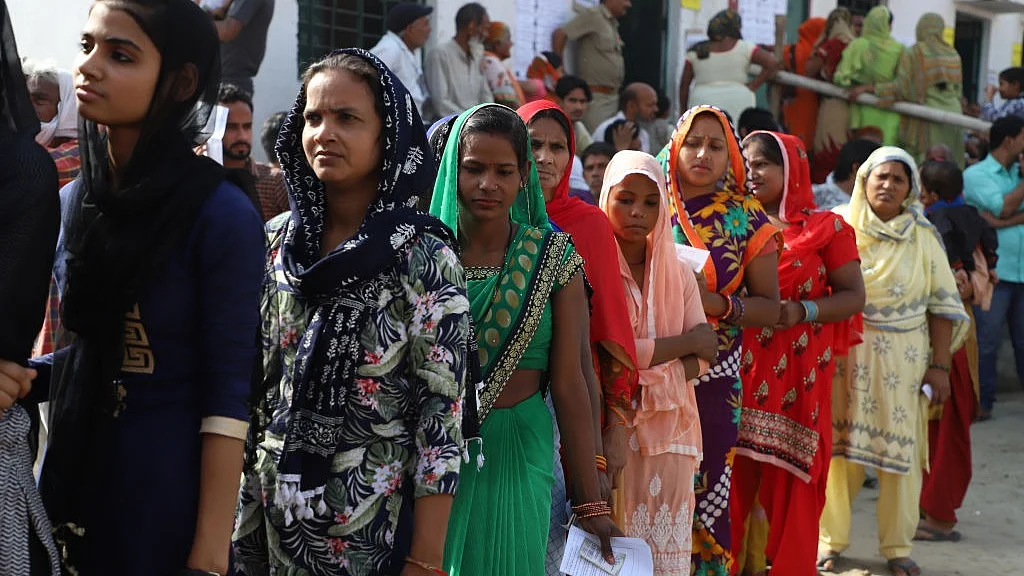Anger against BJP marked polling in UP on April 29
We expected BJP to do well in UP on April 29. But as we saw the skews in turnout numbers and tracked multiple signals, it became clear that we will have to adjust our weights for the BJP.

The BJP had won twelve of the thirteen seats in Uttar Pradesh that went to the polls today. That natural Yadav-Muslim-Dalit vote advantage the SP-BSP-RJD alliance (the Gathbandhan) had in the last few phases was also not as pronounced. In fact, there were some seats where everybody expected the BJP to get a walkover (like Kanpur).
What’s happened today will likely be discussed as an object lesson in humility for everyone — politicians, analysts, reporters and so on. For us, it was a day filled with new learnings around many of the weights we are using.
Let’s talk about Kannauj first (a seat the BJP didn’t win the last time around) where we saw a few things that made us weigh our models towards the BJP.
Firstly, over the last forty-eight hours, several constituencies were abuzz with talk of a police crackdown on Gathbandhan workers planned directly from the CM’s office. A letter, supposedly written by SP spokesperson Rajendra Chaudhary, was doing the rounds.
Secondly, the Prime Minister’s rally in Kannauj was well attended. His only real misstep was talking about himself as belonging to a particular caste — that didn’t go down well but the message he ended with — that he wants to rise above casteist politics resonated with a section of the voting public. Both the SP and the BSP leader responded quickly — but we couldn’t immediately ascertain how effectively.
Thirdly, all the weather forecasts were pointing to a very warm day across UP, with temperatures expected to near 45 degrees celcius by about 1pm and only start to cool down after 5pm. This was true for Kannauj where the high recorded today was 44 degrees celsius. So we knew morning voting patterns were super important.
Combine this with the demographic distribution of populations in these constituencies and we were pretty certain that the BJP would do well on at least half the seats here. We also expected the Congress to do well in one seat — Unnao — and give everyone a run for their money in another seat — Farrukhabad. And we were expecting a stiff contest between the BJP and the Congress in Kanpur because locals were more than a little surprised when Murli Manohar Joshi was “retired” and replaced with a candidate who seemed … older.
As the mercury rose, we noticed an undercurrent of anger. Anger against the BJP in Kannauj for the way neighbours were being harassed. Anger against the BJP in Jhansi where Uma Bharati had chosen not to contest. Anger against the BJP in Unnao which wasn’t helped by Sakshi Maharaj breaking the queue to cast his vote ahead of others.
And we saw turnout start to drop. At the close of polling, turnout is down by 6 per cent in Shahjahanpur and 5 per cent in Jhansi. Of the thirteen seats, turnout is up in five seats, and down in eight.
If you set aside Kannauj and Kanpur, the vote shares from 2014 for both the BJP and the Gathbandhan are nearly equal. If you base it off the 2017 election, the Gathbandhan is ahead. The BJP needed a higher turnout this time.
In his interview with Arnab Goswami, Amit Shah said it best — to win, the BJP needs to target an additional 4-6 per cent vote share on each seat. This can be achieved in only two ways, get more people to vote for them. Or get Gathbandhan voters to stay home.
We assumed they would succeed to a certain extent. We were wrong. Today, the BJP couldn’t seem to get all the voters they won in 2014 to vote for them, and they couldn’t prevent Gathbandhan and Congress voters from turning out.
We are now going to have to build out two models — one assuming the BJP retained Kanpur, and the other assuming the Congress upset the BJP (but possibly not Murli Manohar Joshi). What is certain is that the Gathbandhan rolls into the last three phases more confident than ever.
(Published first on Anthro.ai - a collection of anthropologists, mathematicians, data scientists and market specialists, studying the ongoing election in Uttar Pradesh as an experiment to test the tools and models they have developed to navigate complex human behavior. )
Follow us on: Facebook, Twitter, Google News, Instagram
Join our official telegram channel (@nationalherald) and stay updated with the latest headlines
